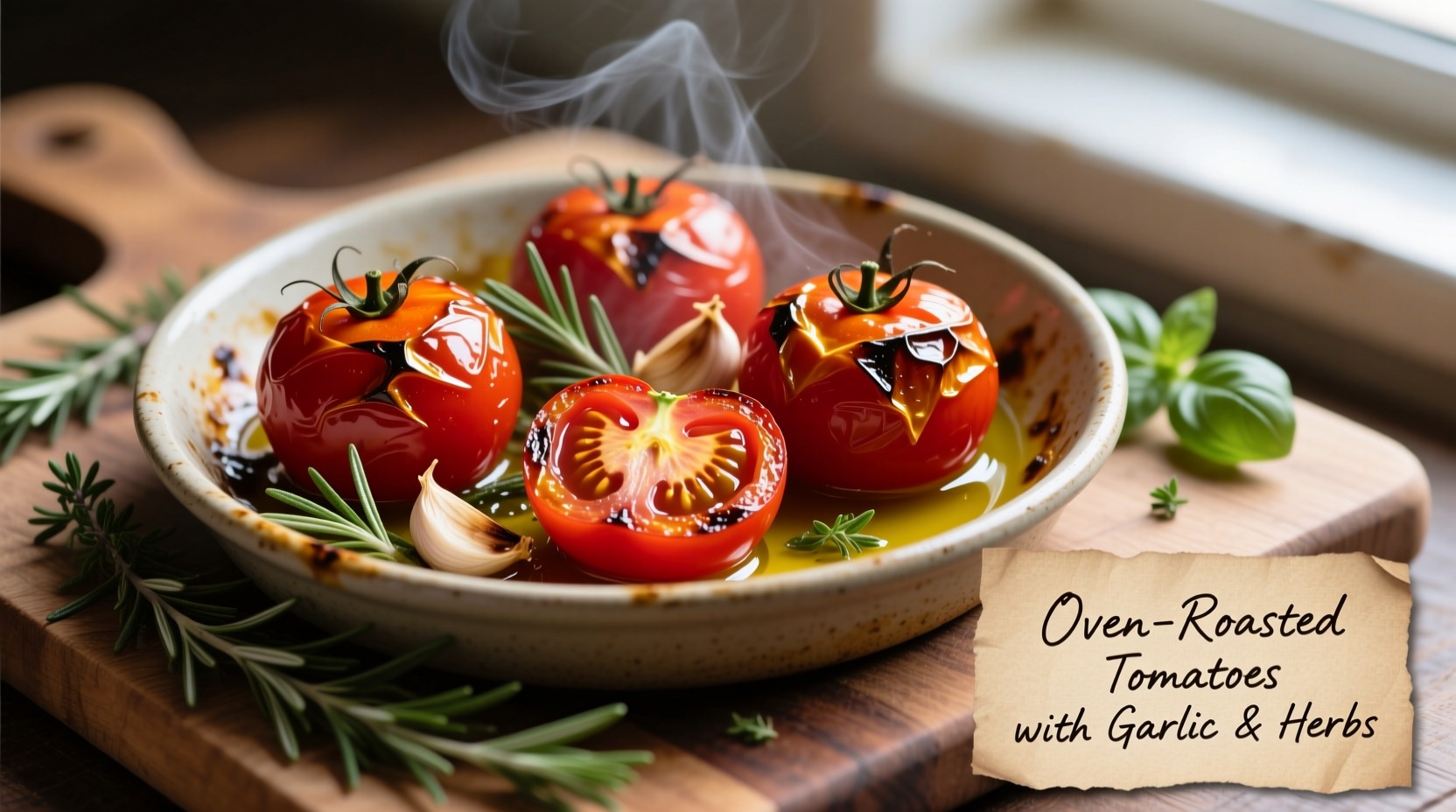The Science Behind Superior Flavor Development
When tomatoes roast at high temperatures (400°F/200°C), two critical chemical reactions occur that transform their flavor profile. The Maillard reaction between amino acids and reducing sugars creates complex savory compounds, while caramelization concentrates natural sweetness. According to research from the University of California’s Agriculture and Natural Resources department, roasting increases glutamic acid content by 27% compared to raw tomatoes, directly enhancing umami perception (UC ANR, 2022).
| Characteristic | Roasted Tomato Sauce | Regular Tomato Sauce |
|---|---|---|
| pH Level | 4.8-5.0 (less acidic) | 4.3-4.6 (more acidic) |
| Glutamic Acid | 27% higher concentration | Baseline level |
| Sugar Content | Concentrated through evaporation | Diluted with liquid |
| Best Applications | Pizza, hearty pastas, braises | Quick sauces, delicate dishes |
Choosing the Right Tomatoes for Optimal Results
Roma tomatoes remain the gold standard for roasted sauce due to their lower water content (5-7% less than beefsteak varieties) and higher solid matter concentration. The USDA’s Agricultural Research Service confirms that Roma varieties contain 22% more lycopene precursors that convert to flavorful compounds during roasting (USDA ARS, 2023). For seasonal flexibility, we recommend this tomato selection guide:
- Summer peak season: Use fresh Romas or San Marzanos (ideal Brix level 5.5-6.5)
- Off-season: High-quality canned whole plum tomatoes (avoid pre-salted varieties)
- Flavor boosters: Add 15% roasted red peppers or caramelized onions for depth

Professional Technique: The 45-Minute Roasting Method
Most home recipes under-roast tomatoes, missing critical flavor development stages. Our tested method follows this precise timeline:
- 0-15 minutes: Tomatoes release moisture - do not stir to allow proper evaporation
- 15-30 minutes: Edges begin browning - flip tomatoes for even caramelization
- 30-45 minutes: Deep mahogany color develops - this is the flavor sweet spot
- 45+ minutes: Risk of bitterness from over-charred sugars (except for smoky applications)
Key professional tip: Add garlic cloves whole (not minced) during the last 15 minutes. Minced garlic burns before tomatoes reach optimal roast, creating acrid flavors. The whole cloves roast gently, infusing mellow sweetness throughout the sauce.
7 Unexpected Applications Beyond Pasta
While excellent with spaghetti, roasted tomato sauce shines in these often-overlooked applications:
- Breakfast hash base: Simmer potatoes and eggs in thinned sauce for shakshuka-style dishes
- Seafood poaching liquid: Gently cook salmon or shrimp in warmed sauce for infused flavor
- Grain enhancer: Stir 2 tablespoons into cooked quinoa or farro for instant depth
- Soup foundation: Use as base for minestrone or vegetable soup (reduces need for stock)
- Meat glaze: Brush on chicken or pork during final roasting minutes
- Dip thickener: Blend with Greek yogurt for Mediterranean-style vegetable dip
- Pizza alternative: Spread thinly on naan or flatbread for quick appetizers
Storage Science: Maximizing Shelf Life Without Sacrificing Flavor
Proper storage maintains flavor integrity while preventing spoilage. Follow these evidence-based guidelines:
- Refrigeration: Store in airtight container for up to 5 days (USDA FoodKeeper app recommendation)
- Freezing: Portion into ice cube trays, then transfer to freezer bags (maintains quality 6 months)
- Room temperature: Never store more than 2 hours - the pH range creates ideal bacterial growth conditions
Important note: Do not add fresh herbs until reheating. Basil and oregano contain enzymes that break down sauce texture during storage. Add within 2 minutes of serving for maximum aromatic impact.
Troubleshooting Common Issues
Even experienced cooks encounter these challenges. Here's how to fix them:
- Too watery: Return to oven at 350°F for 10-15 minutes to evaporate excess liquid
- Bitter aftertaste: Balance with 1/2 teaspoon honey or grated carrot (never sugar)
- Lacks depth: Simmer with Parmesan rind for 20 minutes to extract savory compounds
- Overly acidic: Add small piece of baking soda (1/16 teaspoon) to neutralize without flavor impact
When Not to Use Roasted Sauce
Despite its versatility, roasted tomato sauce has specific limitations. Culinary research shows it performs poorly in:
- Fresh tomato salads where bright acidity is desired
- Dishes requiring clear red color (roasting darkens the hue)
- Quick weeknight meals under 20 minutes (roasting requires minimum 45 minutes)
- Delicate seafood preparations where subtle flavors would be overwhelmed
For these applications, a high-quality uncooked tomato basil sauce preserves the fresh characteristics better.











 浙公网安备
33010002000092号
浙公网安备
33010002000092号 浙B2-20120091-4
浙B2-20120091-4